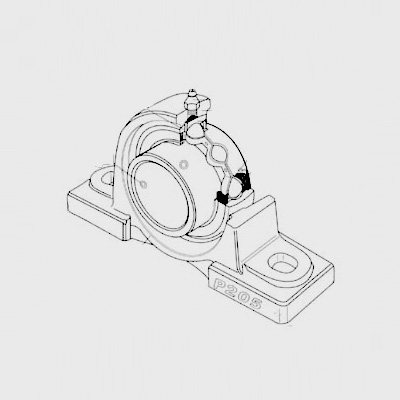
Nov . 22, 2024 15:04 Back to list
what is the thrust bearing
Understanding Thrust Bearings Importance and Function
In the domain of mechanical engineering, thrust bearings play a crucial role in supporting axial loads. They are designed to withstand forces that act along the axis of rotation, making them essential components in a variety of applications, including engines, turbines, and heavy machinery. This article will delve into what thrust bearings are, their functions, types, and applications, emphasizing their significance in engineering systems.
What is a Thrust Bearing?
A thrust bearing is a specific type of bearing that is used to accommodate axial loads, which are forces acting parallel to the shaft. Unlike radial bearings that handle lateral forces, thrust bearings are engineered to support weight primarily directed along the axis of the shaft. They help to reduce friction, enhance efficiency, and prolong the lifespan of rotating machinery.
Functions of Thrust Bearings
The primary function of thrust bearings is to manage and distribute axial loads, which can arise from various sources in machinery. When rotating components generate thrust due to load movements or torque, thrust bearings ensure that these forces do not cause misalignment or damage to the bearing housing and supporting structures. In performing this task, thrust bearings
1. Reduce Friction By facilitating smooth rotation between moving parts, thrust bearings minimize friction, which contributes to energy efficiency.
2. Support Axial Loads As the main function, thrust bearings bear axial forces, preventing wear and tear on components and extending their usable life.
4. Enable High-Speed Rotation Thrust bearings allow for efficient operation at high speeds, which is vital in many industrial machines and vehicles.
what is the thrust bearing

Types of Thrust Bearings
There are several types of thrust bearings, each engineered for specific applications and load capacities
1. Ball Thrust Bearings These consist of balls positioned between two grooved washers. They are suitable for high-speed applications and can handle moderate axial loads. Commonly used in automotive applications, these bearings offer low friction and high reliability.
2. Roller Thrust Bearings Made with cylindrical rollers instead of balls, roller thrust bearings can accommodate higher axial loads. They are often found in heavy machinery, such as mining and construction equipment.
3. Magnetic Thrust Bearings Utilizing magnetic fields for support, these bearings eliminate contact between moving parts, significantly reducing friction and wear. They are commonly used in high-tech applications, including aerospace and high-speed turbines.
4. Fluid Thrust Bearings These bearings use a film of fluid to support the load, allowing for a nearly frictionless operation. They are prevalent in applications requiring precise control and minimal wear, such as in large turbines and generators.
Applications of Thrust Bearings
Thrust bearings are vital in various industries. They are used in automotive engineering to support the driveshaft, in marine applications for propeller shafts, and in turbines for power generation. In addition, they are found in household appliances (such as washing machines) and industrial machinery (like conveyors).
Conclusion
In summary, thrust bearings are essential components that enable the efficient operation of machinery by managing axial loads, reducing friction, and ensuring stability. With various types available to suit different applications, they play an indispensable role in engineering systems. Understanding their function, types, and applications can aid engineers and technicians in selecting the right bearing for a given task, ultimately contributing to the performance and longevity of mechanical systems. As technology advances, the development of more efficient and durable thrust bearings will continue to enhance the capabilities of modern machinery.
Latest news
-
Premium Deep Groove Ball Bearings | High Speed & Reliability
NewsAug.29,2025
-
Durable Scaffolding Clamps - Secure & Reliable Tube Connectors
NewsAug.28,2025
-
Common Failures in Thrust Ball Bearings and Solutions
NewsAug.22,2025
-
How Tapered Roller Bearings Can Take Shock Loads
NewsAug.22,2025
-
Angular Bearings in High-Precision Spindles
NewsAug.22,2025
-
The Impact of Misalignment on Cylindrical Roller Bearing Performance
NewsAug.22,2025
